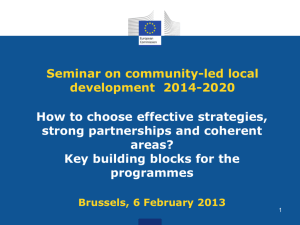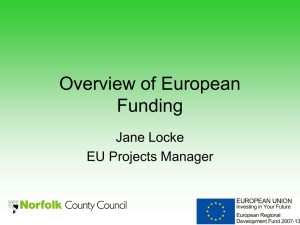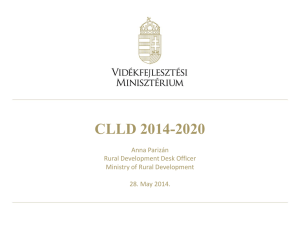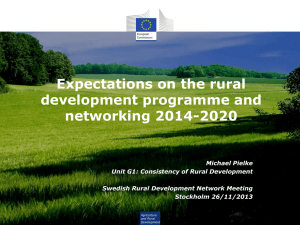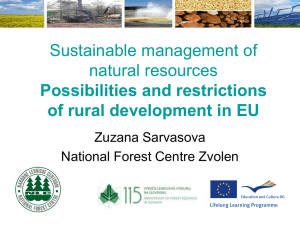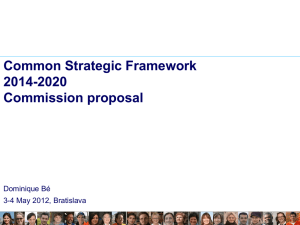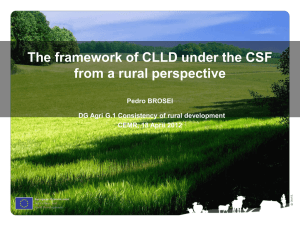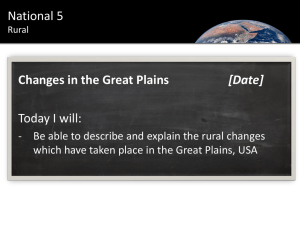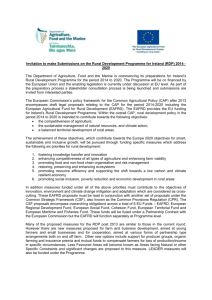LEADER as a part of the CAP
advertisement
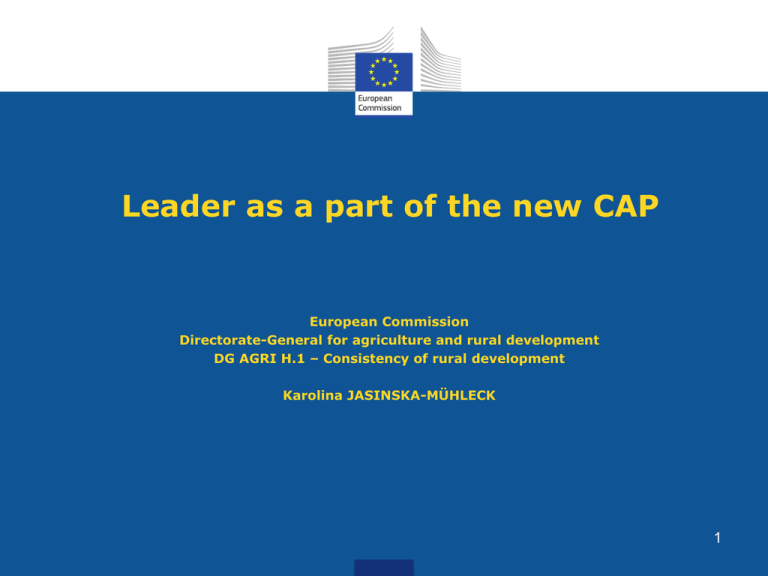
Leader as a part of the new CAP European Commission Directorate-General for agriculture and rural development DG AGRI H.1 – Consistency of rural development Karolina JASINSKA-MÜHLECK 1 Purpose of the presentation • Put LEADER in the context of the new CAP • Highlight the main changes from Axis 4 to LEADER CLLD • Explain how LEADER can be programmed to achieve its value added 2 Where do we stand? General framework • Common Provisions Regulation adopted • Partnership Agreements submitted (1 PA adopted) Rural development policy • RD regulation adopted, IA/DA expected shortly • ¼ RDPs submitted 3 The new strategic framework 4 Coordination with other Funds: CSF and PA Europe 2020 strategy Common Strategic Framework (CSF) – covering the EAFRD, ERDF, ESF, Cohesion Fund and EMFF, and reflecting EU2020 through common thematic objectives to be addressed by key actions for each of the funds Partnership Agreement – national document outlining the intended use of the funds in the pursuit of EU2020 objectives Rural development policy: EAFRD Other CSF funds (ERDF, ESF, CF, EMFF) Priorities Innovation, Environment and Climate Change as cross-cutting objectives Fostering knowledge transfer and Innovation in agriculture, forestry and rural areas Enhancing competitiveness of all types of agriculture and farm viability Promoting food chain organisation and risk management in agriculture Restoring, preserving and enhancing ecosystems dependent on agriculture and forestry Promoting resource efficiency and supporting the shift towards a low carbon and climate resilient economy in agriculture, food and forestry sectors Promoting social inclusion, poverty reduction and economic development in rural areas Rural Development Programme(s) 5 5 Leader as a governance tool for balanced territorial development in the RDP Clear, appropriate Objectives & Priorities at EU-level (legislation) Pertinent Analysis and setting of Goals (at programming level) Wide menu Pre-defined measures Governance-based approach (LEADER / CLLD) Balanced Rural Development Programme 6 Lessons learnt from previous programming periods • • • • • Some rigidities in the use of LEADER as driver for CLLD Limited quality of strategies Limited LAG's capacities to develop and implement a LDS Unclear responsibilities of different involved parties Limited level of participation and limited interest by the private sector 7 What is new (1)? • LDS as central tool to meet core objectives at local level: unlocking strategies from RD measures • Clear provisions on the elements of a LDS • List of minimum tasks of a LAG • Greater focus on animation and capacity building • Strengthening the participation of the private sector in the partnerships • Multi-funded strategies 8 What's new (2)? • Simplified costs • • • • • Increased range for population Tailor made definition of rural areas Streamlined transnational cooperation EAFRD support rate to LEADER up to 80% (90%) Minimum 5% EAFRD contribution to LEADER 9 Achieving the added value of LEADER • Chosing a flexible and open approach which is in line with the needs on the ground • Keep additional rules to necessary minimum • Support capacity-building at all implementation levels • Appropriate division of tasks • Reduce administrative burden for all • Provide space for innovation • National co-funding has to be ensured • Evaluate efficiency of delivery system 10 A new chance for LEADER?! 11
